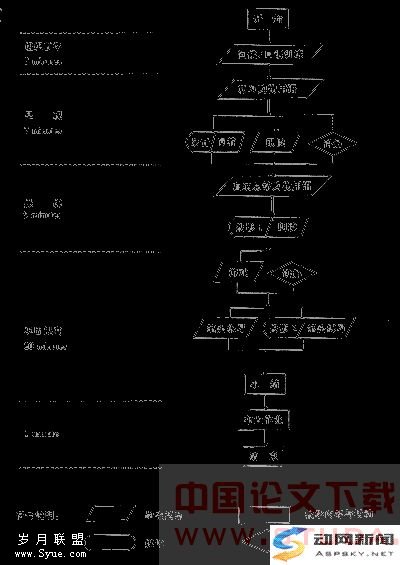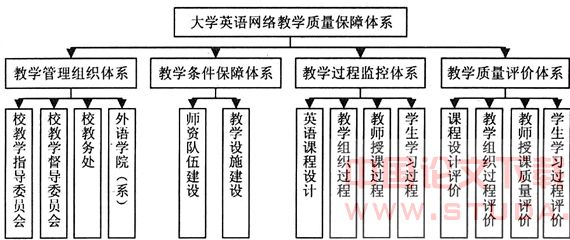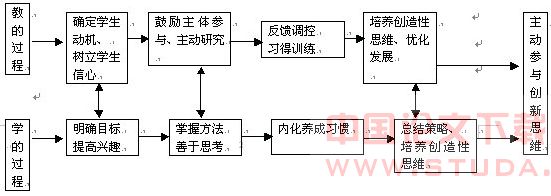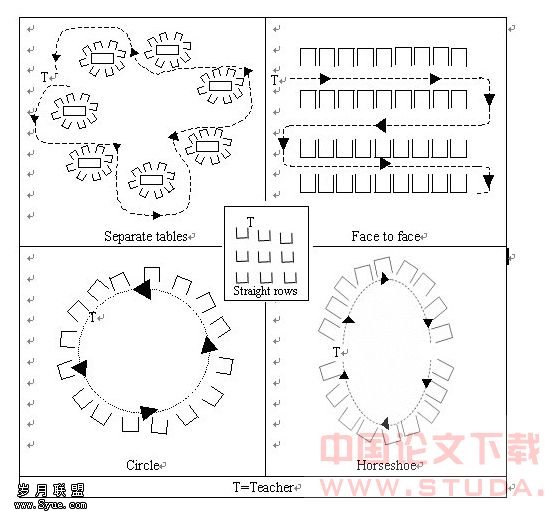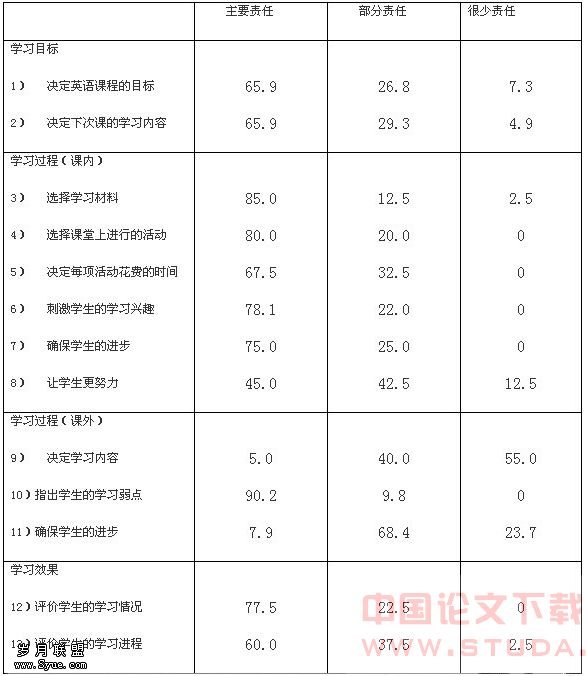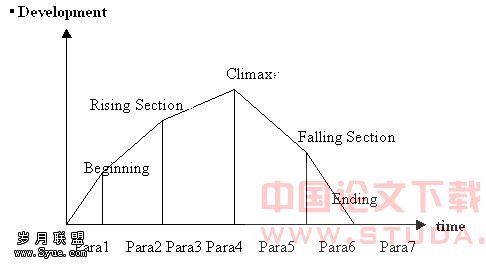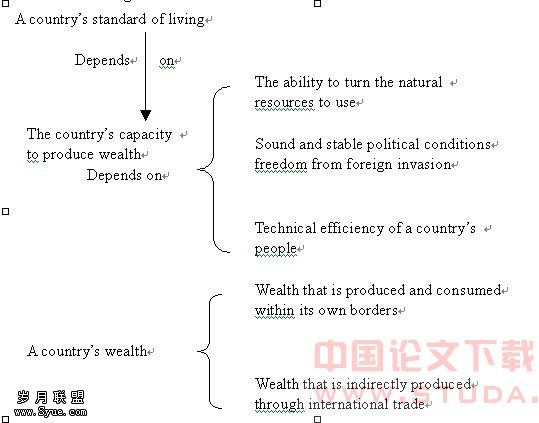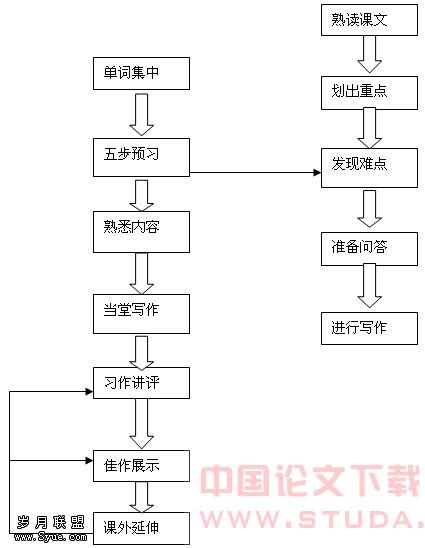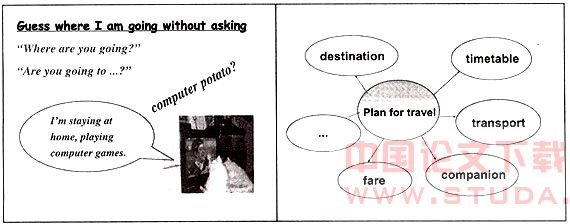谈英语词汇教学
[Abstract] Vocabulary is one of the three essential elements of language—pronunciation, vocabulary and grammar. It is compared to the building material of language. Vocabulary is the vehicle of pronunciation and grammar, without which all the functions of language would not be performed. In the history of foreign language teaching and learning, vocabulary learning and teaching has always been attached great importance to and it has been treated as the key and point of teaching and learning. Nowadays, there appears a tendency of neglecting vocabulary teaching, which results in the students’ low efficiency in vocabulary learning. This has become the hindrance to the students’ improvement in English. This article lists out the criteria and principles observed in selecting words for teaching, puts out stages for vocabulary learning and elaborates on a variety of measures and techniques to arouses students’ enthusiasm in vocabulary learning to help students learn independently so as to reach the final purpose for vocabulary teaching—raise students’ efficiency in vocabulary learning.
[Key Words] English teaching; words memorizing; teaching methods
【摘要】词汇是语言构成的三大要素之一, 是语言的建筑材料,是语音和语法的承载体。没有词汇作为基础, 语言的所有功能只能是一句空谈。在外语的和学习中历来重视词汇的习得,因此它一直是外语学习中的重点。目前由于种种原因,在教学中存在忽视词汇教学的现象,学生的词汇学习出现了低效现象。针对这种现象,本文归纳了词汇教学中的选词的标准和原则,词汇学习的方法步骤,并提出了各种教学方法和技巧来激发学生词汇学习的兴趣,发挥学生学习的主动性,从而达到词汇教学的最终目的——提高学生词汇学习效率。
【关键词】英语教学;词汇记忆;教学方法
1. Introduction
Language consists of three basic elements: pronunciation, vocabulary and grammar. Vocabulary is the basic element of language, because thoughts and concepts are all expressed through vocabulary and vocabulary is central to language and critical to the typical language learner. Without it, language no longer exists. Krashen said: “When students travel, they don’t carry grammar books, they carry dictionaries.” [1] Wilkins had said “Without grammar very little can be conveyed; without vocabulary nothing can be conveyed.” [2] In a word, one’s English level mostly depends on the mastery of vocabulary: the more vocabulary one owns, the more easily is it possible for him to express better. Therefore, as a teacher, she/he must put vocabulary teaching in the first place to help students learn vocabulary well.
2. Problems exist in English vocabulary teaching and learning
Vocabulary teaching is an important part in English teaching. However, most of the English teachers today neglect the importance of vocabulary teaching, they pay little attention to the cultivation of students ability to learn vocabulary actively and independently. The things continuing this way, the students easily forget words learned before. The most terrible is that students cannot put learned words into practice.
2.1 Problems exist in English vocabulary teaching
2.1.1Teachers neglect the importance of vocabulary
Teachers leave vocabulary learning to students themselves. Some books tell teachers that students could learn all the words they need without help. In fact, teachers are sometimes told that they ought not to teach too many words before their students have mastered the grammar and the sound system of the language. In journal articles for teachers, vocabulary is seldom mentioned. Pronunciation and grammar were emphasized, but there is little or no emphasis on vocabulary.
2.1.2 Teachers neglect teaching techniques
Many teachers do not seem to take a systematic approach to vocabulary teaching. They often prepare lessons just before class, and there is no long-term planning. In class, teachers do not put students in the first place, and they maximize TTT (Teachers Talking Time) and minimize STT (Students Talking Time). Teachers neglect taking creative measures and techniques to arouse students’ attention to vocabulary study.
2.1.3 Teachers neglect collocation
The words always appear together with other words, not in isolation. Language is made up of sets of words that go together to express a single meaning such as “by the way, go ahead, in the end” and so on. These are often called collocations or phrases. However, most vocabulary teaching is on identifying and teaching single words, rather than collocations or phrases. Many teachers ask students to remember some words without collocation. As a result, students only remember them without understanding the systems of the words. Their oral English sound strange and they say something like “yesterday night (last night)”. Therefore, teachers need to introduce lots of word relationships not only single words, and learners need to be taught how to notice word relationships on their own.
2.1.4 Teachers neglect selecting vocabulary
Many teachers often teach any new words in the textbook without selection. This can not only confuse students who get them all mixed up, but also overload the students’ memory. In fact, students do not need to learn every word they meet. It is because not all words are equally useful. A convenient division for the levels of vocabulary is shown in the accompanying table adapted from Nation.
Table 1. A Convenient Division for the Levels of Vocabulary
Level Number of words Text coverage, %
High-frequency words
Academic vocabulary
Technical vocabulary
Low-frequency words
Total 2,000
800
2,000
123,000
128,000 87
8
3
2
100
“Clearly the 2,000 high-frequency words of English should receive attention first. With these, it is possible for people to use English in any normal way.” [3]
2.1.5 Teachers neglect consolidation
In vocabulary teaching, teachers seldom help students consolidate learned vocabulary, so students learn them and then forget. Learning English vocabulary needs to be highly recycled. However, most textbooks do not seem to regularly recycle important vocabulary and the practice in class is not enough. These make students lose the opportunities of consolidating vocabulary. Since the vocabulary learned before have not been consolidated in time, the students forget it easily. The teacher should work out some ways to recycle the vocabulary introduced in the course book.
2.1.6 Teacher neglect practice
In English teaching, the teacher teaches too much knowledge of words, but neglects putting them into practice, especially in vocabulary teaching. Many teachers ask students to recite and remember the new words, but do not know how to organize students to use the new words in writing, speaking and reading. It is not easy for students to digest and absorb the words in time, so students feel it difficult to learn vocabulary. The effects can be found in the following facts:
(I) Students do not believe that it is a good idea to learn a lot, read a lot, practice a lot and do not believe that he can remember and master a number of vocabularies in a short time.
(II) Students lacking of skills to remember vocabulary have trouble in spelling the words
(III)Students make a lot mistakes in translation and writing.
2.2Problems exist in vocabulary learning
2.2.1 Students forget the words easily
Many students spend a lot of time learning vocabulary, but most of them still complain that their vocabulary is not enough and they cannot avoid forgetting the words.
It is easier for students to recognize the words than consolidate and remember them. “Initial word knowledge is very fragile and memories of new words that are not met again soon are lost.” [4] Here are some reasons:
First, memory has a regular pattern.
Rob Waring said: “Brains are designed to forget, not to remember. If a student has just learned 10 new words, it is normal for most of them to be forgotten within a few days, and maybe only one or two will be remained in the medium or long term. This is called the ‘Forgetting Curve’”. [5]
Second, there is very low recycling of vocabulary in course books. Most words, which are learned before seldom appear in another exercise, or even in the same book. The words, which cannot be consolidated in time, are forgotten quickly.
2.2.2 The efficiency of study is not so high.
The main reason is that Chinese affects vocabulary learning. In this situation, it is very difficult for students to understand the relationships among meaning, pronunciation and formation. So students feel vocabulary learning difficult. For example, when they have learned “take”, “cake” and later come across “lake”, they do not know how to use the knowledge they learned to read it. On the other hand, teachers do not know how to use the effective way to draw students’ attention. Therefore, students lose interest in learning.
⑴ Students cannot use the words in communication flexibly.
In the process of vocabulary learning, because of the environmental limitation and the lack of learning techniques, the students always remember the meaning without certain collocation or cultural background. So they do not understand these words and use them blindly in conversation. When they meet some phrases, such as “a bad apple” “as busy as a bee” or” A little bird told me”, which contain no new words at all, so they will feel puzzled.
⑵ Many students learn vocabulary in ineffective ways.
Rote learning is a typical ineffective way. So it is important to make students aware that not all words are equally important and that effective ways of vocabulary learning help to reduce forgetting. [6]
3. Select words
Learners need help in developing a large sight vocabulary, so that they may automatically access word meaning. However, it is fortunate that not all English words need to be learned. This is because not all words are equally useful. Students do not have time to learn all the words, nor do they have time to pay attention to too many words each time. It is important that vocabulary teachers have to focus on:
(1) Building the learner’s ‘start up’ or initial vocabulary.
(2) Developing the learner’s understanding of what learning words means.
(3) Showing the learner how to learn the words most effectively.
The final aim is to develop the learners as independent word learners. [7]
Before reaching the aim, teachers should carefully choose certain words to teach, with focus on the most frequent and useful words. Special attention should also be given to words which are difficult to learn.
3.1 What words to teach?
Research shows that learners should learn 2,000 most frequent words in English and about 3,000 word families to be good at English (‘Word family’ is a group of words that own the same meaning such as ‘care, careful, careless’ etc.). Teachers should concentrate on the most frequent and useful words first, as these words are the words that students will meet very often. Many teachers concentrate on rarer words assuming that the basic words like “take, put” are known. But those words are among the most troublesome, with their multiple meanings. Therefore, teachers should work very hard on the high frequency words.
3.2 Some criteria for selecting vocabulary.
Selecting words is not blind, it need criteria to limit its scope.
Table 2 Some criteria for selecting vocabulary
Criteria Definition
Range
Coverage
Frequency
Learnability
Language needs The extent to which a word occurs in the different types of texts
The capacity of a word to replace other words
The number of occurrences of a word in the target language
The extent to which a word can be learned without difficulty
The extent to which a word is regarded as ‘required’ by the learner in order to communicate.
Source: Adapted from Teaching Vocabulary [8]
3.3 Four principles for selecting vocabulary
Selecting words also need principles.
(1) The words that native speaker usually use in many field is the words for learners to learn.
(2) Some words which are not usually and widely used, but it is certain that students always come across in study (such as experiment, graph, specimen etc.).
(3) The capacity of a word or phrases to replace other words or other phrases. For example, ‘immediately’ can take the place of ‘straight away, without delay, instantly, in a flash’ etc.
(4) Different words have different teaching difficulties. For example, “classroom is easier to teach than “humanism”. [9] There is no need for students to learn the chosen words in the same way. In fact, it is enough for some words to be mastered as the active voice, other words need changing into the passive voice.
4. What is involved in vocabulary teaching
Learning is a process of gradual development, so is vocabulary learning. Vocabulary learning can be divided into 3 stages:
(1) Learn the new words.
(2) Put the words in the certain place of memory.
(3) Consolidate the words to reach the deep memory.[10]
Nowadays vocabulary teaching should be part of the syllabus, and should be taught on a well-planned and regular basis. There are many ways of vocabulary teaching in English study. Different teachers should adopt various effective teaching methods and use a lot of other means to stimulate students’ enthusiasm in vocabulary learning, which certainly will have an great effect on students’ English study.
4.1 Presentation
The words in most English textbook are explained in the students’ native tongues. In such book, the English word appears first on the left of the page, and the meanings of words appear on the right of the page in the students’ language. Except this, there is no other instruction. So teachers need to offer a creative and attractive presentation after reading aloud each word. It means that in classes the teacher should use some particular skills and techniques to show the meanings of the words.
4.1.1 Use real objects to show meanings
In order to help students understand the meaning of a word, using real objects are a good way for teaching. Teachers can bring real objects to the classroom for showing the meaning of words. For example, 钱包(a purse), 苹果(an apple), 甜的糖果(a sweet candy) etc.
4.1.2 Draw pictures, diagrams
Pictures for vocabulary teaching may have many resources. Besides those drawn by the students and the teacher, there are attractive sets that are intended for schools. Pictures, which are cut out of magazines and newspapers, are also useful; many cheap books for children have attractive pictures, which can show meanings of basic words.
4.1.2.3 Commands and actions to show meanings.
Commands and actions are the communicative way of teaching vocabulary. They not only arouse students’ interest to study English, but also make students understand the meanings of new words easily. For example:
Put your left hand on your head
Touch your neck with both hands
Put your hands on your knees
Put both hands on your shoulder
Put your tight hand on your left knee
Bend your knees and touch the floor
Touch the floor near your left foot
Put both hands on your legs
Sit down and put your hands on your knees[11]
4.2 Practice and consolidation
For the students, it is less difficult to learn vocabulary for the first time than to consolidate and remember them. It is too often to hear students complain that they keep learning and forgetting. Because the nature of human memory dictates that vocabulary will probably be forgotten. Especially if the word has just been met, vocabulary loss happens. Because it is at the initial stage of word learning that word knowledge is so fragile. Words and phrases need to be recycled to be kept in memory. The more they work with the words and the more deeply the words are processed (by working with the new word in various ways), the more likely the words will be retained in memory.
4.2.1 How the memory works
Before teaching the vocabulary, teacher should know about how the memory works, how to help students store words in memory, so that it might help them create more effective ways to teach vocabulary.
(1)While the learners learn new items for the first time, brains store them in short-term memory, and then in long-term memory.
In class, teaches should not aim at teaching more than seven, because the short-term memory is not effective if the number of chunks of information exceed seven. However, once the information is in long-term memory, it can hold any information.
(2)Words are stored and remembered in a network of associations.
These associations can be of many types and be linked in a number of ways. Words in our mental lexicon, for example, are tied to each other not only by meaning, form and sound, but also by sight. Students link similar shapes in their mind’s eye, and by other parts of the contexts in which they have learned or experienced then. To know the meaning of a word become the task of knowing its associations with other words. Therefore, to teach it most effectively, the teachers should present it in this network of associations
(3) Mental activity has a powerful effect on memory.
What this means is that the more students actively work out a solution to a problem (the more commitment they make to the task of learning something that is), the more likely they of storing the information permanently.
(4)Finally, one of the earliest findings from memory research was that short term memory holds a fairly constant number of units, units which later research has shown likely to be “chunks” of information, composed of several rather than single items. Even though these chunks may be larger and contain more information, their number still remains fairly constant in memory, and their size increases students we become more familiar with remembered material, permitting them to store and recall more information. [12]
4.2.2 Measures to consolidate the words
Because words students learned are easy to forget and that the memory has the “Forgetting Curve”, it is important to consolidate the words. Teacher should take some effective measures to consolidate the words, such as saying in groups, through various activities and under the teacher’s supervision. They can also enhance storage by encouraging students to use memory techniques that will aid them in committing words to memory.
(1) Labeling
Ask students to write the name of objects indicated in the picture. A competitive element can be introduced by making the first student to finish the winner.
(2) Pointing out the difference
Put students into pairs. Each member of the pair receives a picture which is slightly different from his partner’s. Students hide the pictures from one another and then, by a process of describing, questioning and answering, discover what the differences are.
(3) Describing and drawing
Students are put into pairs. One student has a picture; the other has a piece of blank paper. The student with the picture tells her/his partner what to draw so that the drawing ends up the same as the picture. During describing and drawing, the student cannot show the picture.
(4) Playing games
Show a picture with many things on it to students, or a series of different flash cards or magazine pictures. Give students several minutes to memorize as many of the things as possible. Then teacher takes away cards or pictures and the students have to say what they have seen or write down the names of everything they can remember, finally compare the results with the other pairs of students.
(5)Word series
Put words into series. Let students do the series by themselves. For example:
Fruit: apple, orange, pear
Clothing: _________ __________ __________
Vegetable: __________ __________ __________
Consolidation is vital, and ideally it should happen one or two days after the initial input. After that, weekly tests can check on previous knowledge that learned.
There is two detailed and important points that are good for memorization.
(1) In defense of rote learning——the effective use of word cards and rote memorization
‘Word cards’ are pieces of paper with the English on one side and a translation or picture on the other. Learners are given a list of words which they need to learn (highly frequent, useful and common words) and they make word cards for the words they do not know. It is useful to test the learners on these words first so they will find out which words they do not know. The learning needs to be systematic because only in this way is learning effective. This is how it is done.
First, the learner breaks the whole pack of word cards into manageable groups of about 8-12 words per set (words starting with the same letter, or that are similar in meaning or sound to other words in the group, should be avoided as this can interfere with learning). [13]
Second, the learners number each set. Then the learner put known words in one pile, the words that are not recalled are put in the other. When she/he has gone through the full first set of words one time, the learner picks up the words that were not recalled and tries again. As before, the words that are recalled go to the ‘recalled’ pile and those that are not go back to the ‘unrecalled pile’. [14] The learner works the same way until the whole of set 1 is known. Then, set one is put to one side and the same procedure is done with set two. Set two is then put to one side.
The next step is important and is most often missed. The learner should now go back to set one and recall them again. This is essential because of the steep forgetting curve that is a natural part of the way the short-term, or working memory (does not) work. If the learner goes to set three without returning to set one, the learner will be starting to forget words in set one. So she MUST return to it. Each time a set is picked up it is important to shuffle the order of the words in the set and to learn from English to the mother tongue, and vice versa. When she has re-learned set one, she/he goes back to set two and only then on to set three. The important point is to always go back to the start and go through the sets and only introduces a new set once all the others prior in the sequence have all been recalled. This is called ‘scaffolding’ one’s knowledge. Thus the sequence is:
One, two, one, two, three, one, two, three, four, one, two, three, four, five…etc.
Most learners who use word cards can be quickly achieved each little “goal”. Now teacher should ask students to deepen this knowledge and meet it in time and time again in context.[15]
(2)Semantic field
Word frequency is another factor that affects storage, as the most frequently used items are easier to retrieve. Students can use this information to facilitate the learning process. By grouping items of vocabulary in semantic fields, researchers suggest using memory strategies to aid learning, and these can be divided into:
(a) Creating mental linkages: grouping, associating, placing new words into a context;
(b) Applying images and sounds: using imagery, semantic mapping, using keywords and representing sounds in memory.
(c) Reviewing well, in a structured way
(d)Employing action: physical response or sensation, using mechanical techniques.[16]
The techniques just mentioned can be used to greater advantage to make students aware of different memory strategies.
5. Developing vocabulary building strategies and deepen knowledge of words
Because of limitations of time, students cannot learn all necessary vocabulary in the class. So teachers should help students to develop their own vocabulary building strategies so that they can learn more vocabulary effectively by themselves, especially outside the class.
5.1 How do learners deepen their knowledge of words?
Learners learn vocabulary well when they are actively involved in word learning and different levels of mental activity. If a learner just repeats a word over and over, the processing is quite shallow because it is just maintaining knowledge. Thus writing the word out time and time again will lead to little learning. Learners should be trained to work with words deeply with the collocates and seeing how the word is similar but different from other words, of course, not just keeping words in isolation. Teachers should give chances to students to notice new words by themselves. Teachers should also give chances to students to use learned words in speech or writing. Only in this way will students know if the learning has been successful. Thus teachers should try not to just present the meaning of a word to a learner, but let the learner work it out for herself, with guidance where necessary.
Learning exercises must not only teach learners new things about words. They should also, as part of their agenda, be training the learner to become independent. This means that exercises should not only teach but also make learners aware of the nature of vocabulary and new words go together. The aim of every exercise should always be to make the learner more and more independent as a word learner, not more and more dependent on the teacher’s or dictionary’ knowledge.” [17]
5.2 Vocabulary building strategies and ways of deepening knowledge of words
5.2.1 Read graded readers
Ask students to read graded readers outside class and to to long simplified recordings. In this way students will be increase a lot of vocabulary, they can find new collocations, they also improve their reading fluency in an enjoyable way.
5.2.2 Guessing from context
By far the most important vocabulary strategy to teach is to ‘guess unknown words from context’. When students learned their first language, most of the words were not taught to them, they picked them up from books, the TV and from conversations. There is not enough time to teach thousands of words one by one in class, so language learners must also know how to guess unknown words successfully.
The first thing to do when a learner meets a new word is to ignore it. If it is important it will come again. If they meet the word a second time and communication breaks down, then they should try to guess its meaning. Initially, it is important to make them notice its part of speech, and then they should look for clues around the word to help with the meaning. If they have an idea, they should try to substitute their guess into the sentence to see if the meaning of the sentence is clear. They will soon realize if they have the wrong part of speech, or wrong meaning. Finally, they can use word affix knowledge to confirm the guess. [18]
5.2.3 Dictionary work
In order to teach students how to learn vocabulary effectively. Let students use their dictionaries well and this will save them a lot of time and will ultimately make them independent of teachers and textbooks.
The following examples “emphasize the meaning of an unfamiliar word”:
(1)Synonym in apposition
Our uncle was a nomad, an incurable wanderer who never stays in one place.
(2)Antonym
When aunt loved Tom deeply, she absolutely despised his twin brother Smarty.
(3)Cause and effect
By surrounding the protesters with armed policemen, and by arresting the leaders of the movement, the rebellion was effectively quashed.
(4)Association between an object and its purpose or use
The scientist removed the treatise from the shelf and began to read.
(5)Description
Tom received a new roadster for his birthday. It is a sports model, red with white interior and bucket seats, capable of reaching speeds of more than 150 mph. [19
5.2.4 Collocation
Vocabulary exercises should focus on deepening and internalizing knowledge of words, but not only focus at the surface ‘form-mean’ level and should deal with collocations and multiple-word units, not only single words. The type of practice in these activities allow the students notice new words, or new features of words they already know, as well as giving them chances to internalize them. For example, simple games and matching exercises manipulate only meaning and/or form, and thus call for relatively shallow mental processing. The focus should also on deepening and internalizing the knowledge by doing activities at a deeper level. Thus, when doing exercise the quality of the mental processing is more important than simple quantity.
5.2.5 Organize vocabulary effectively
There is evidence that if information is stored in special ways, e.g. related information is stored together or new information is related to previously stored information, it is more likely to be retained and easier to retrieve. Considering the massive English vocabulary, it is necessary for the teacher to guide students to organize the words they encounter. With a conscious attempt at vocabulary organization it is likely that a student’s word store will increase significantly.
6. Conclusion
Vocabulary learning plays an important part in English study. Although much of the work of vocabulary learning is the responsibility of the students, teachers’ guidance and help are invaluable. If teachers present new vocabulary items effectively, it saves a lot of time and energy for consolidation. Besides, teachers’ work should also include helping students to develop vocabulary-building strategies. In a word, students are the center in classes, and teachers should encourage students to explain and learn by reading, using word cards, guessing from the text and dictionary work, and then consolidate and deepen the knowledge of words.
Bibliography
[1] Teaching Vocabulary [cited. Available from http://www.auburn.edu/~nunnath/
engl6240/tvocabul.html.]
[2] 同 [1]
[3] James Coady & Thomas Huckin. Second Language Vocabulary Acquisition [M]. 上海:上海外语出版社,2001. P239
[4] Rob Waring Basic Principles and Practice in Vocabulary Instruction. Notre Dame Seishin University Okayama. The Language Teacher 2002
<http://www.lingchina.org/ziyuan/document.php?id=3428&cid=145&cid2=148>
[5] 同 [4]
[6] 王蔷 程晓堂. A Course in English Language Teaching[M]. 北京:高等教育出版社, 2002.P76
[7] Dr. Rob Waring How should teachers incorporate vocabulary teaching into their classes? <http://www1.harenet.ne.jp/~waring/papers/eltnews.btml> Notre Dame University Eltnews.com in May 2001
[8] 同 [1]
[9] 刘春燕. 词汇教学探讨[J]. 天津成人高等学校联合学报. 2005 No.1 Vol.7. P105
[10] 尹照春. 浅论英语词汇教学[J]. 新乡师范高等专校学报. 2003 No.6 Vol.17 P119
[11] Allen V. F. Techniques in Teaching Vocabulary [M]. 上海:上海外语教育出版 社. 2002. P26
[12] Carter, Ronald, and Michael McCarthy. Vocabulary and Language Teaching [M]. Edited by Christopher N Candlin, Applied Linguistics and Language Study New York: Longman Inc., 1988.P63,65
[13] 同 [7]
[14] 同 [7]
[15] 同 [7]
[16] Solange Moras, Sao Carlos. Teaching Vocabulary To Advanced Students: A. Lexical Approach from [cited. Available from http://www3.telus.net/
linguisticsissues/ teachingvocabulary.html>
[17] 同 [7]
[18] 同 [7]
[19] 同 [12]
